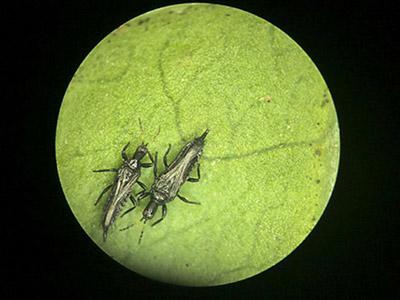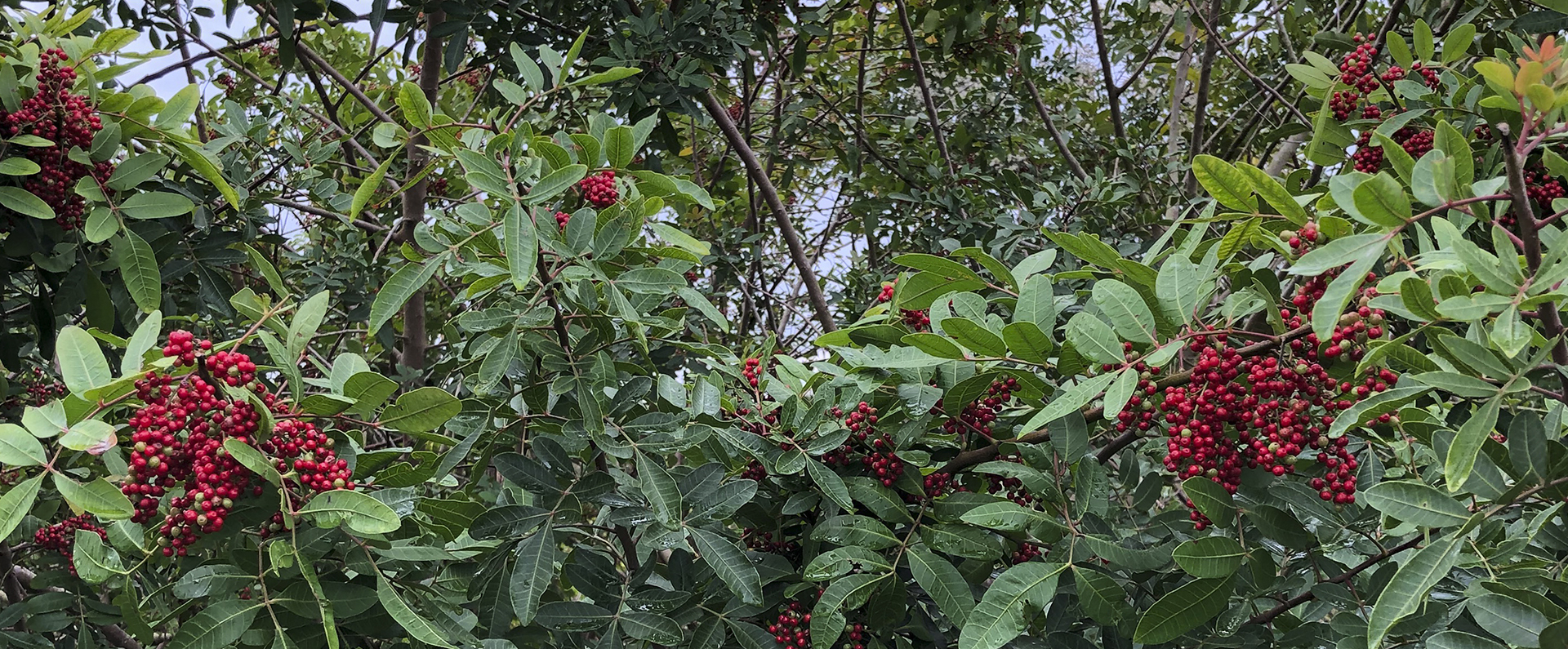Harnessing a Familiar Foe

Scientists Fight Invasive Species with Predators from Back Home
Biodiversity provides many benefits, from the sheer beauty of complex creatures to the practical value of organisms that might be the next miracle drug or climate-resilient crop. However, the diversity of our ecosystems is under threat. One of the most persistent challenges comes from invasive species — non-native organisms that spread explosively, competing with and harming native plants or animals. Recently, several U.S. states have been battling an invasion by the Brazilian peppertree, a woody evergreen shrub that grows in dense thickets and crowds out native vegetation. The peppertree’s fruit is toxic when consumed by wildlife, and many people have allergic reactions to its pollen and sap. To date, it has spread within California, Florida, Hawaii, and Texas. In Florida alone, it covers more than 700,000 acres.
ARS scientists have identified one possible tool to fight this invasion: Brazilian peppertree thrips (Pseudophilothrips ichini) are insects that attack the peppertree in its native environment. The researchers found that they can also survive and attack it in the new U.S. areas where it has spread. In pursuing this approach, the scientists are using a strategy that has shown great promise in fighting invasive species elsewhere: biological control agents. Instead of applying pesticides that can have detrimental environmental impacts, or manually removing invasive plants, which can be too labor-intensive and costly to be practical, the scientists identified a species that was ideally suited to preying on the invasive plant — because it already did just that in its native environment. This strategy can be a gamble, because not all biocontrol agents thrive in new environments. In this case, however, the scientists found that a majority — about 60% — of the thrip communities survived in Florida. At that level, they could be a lasting threat to the invasive Brazilian peppertree plants — and part of a much-needed solution for native plants and animals.
Want to learn more? Read "Thrips Show Promise in Controlling the Invasive Brazilian Peppertree in Florida".



